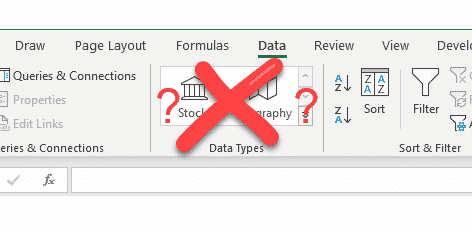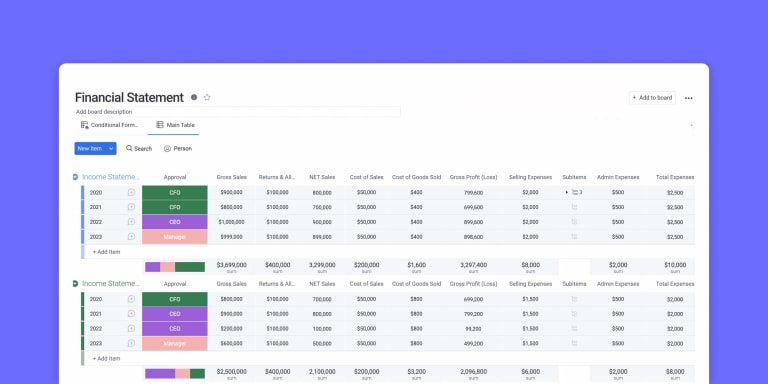9 Simple Techniques For Excel Links Not Working
Wiki Article
The Best Strategy To Use For Excel Links Not Working
Table of ContentsAbout Excel Links Not WorkingSome Ideas on Excel Links Not Working You Need To KnowExcel Links Not Working - The FactsHow Excel Links Not Working can Save You Time, Stress, and Money.Excel Links Not Working for Beginners

However, array calculation features like either can not manage entire column references or calculate all the cells in the column. User-defined features don't instantly acknowledge the last-used row in the column and, consequently, often calculate entire column recommendations inefficiently. However, it is very easy to program user-defined functions to make sure that they acknowledge the last-used row (excel links not working).

The Definitive Guide for Excel Links Not Working
Using the formula for a vibrant array is generally more suitable to the formula because has the negative aspect of being a volatile function that will be computed at every recalculation. Performance lowers because the function inside the vibrant array formula should take a look at several rows. You can minimize this performance reduction by saving the component of the formula in a different cell or defined name, and afterwards describing the cell or name in the vibrant variety: Counts!z1=COUNTA(Sheet1!$A:$A) Offset, Dynamic, Range=OFFSET(Sheet1!$A$ 1,0,0, Counts!$Z$ 1,1) Index, Dynamic, Variety=Sheet1!$A$ 1: INDEX(Sheet1!$A:$A, Counts!$Z$ 1+ROW(Sheet1!$A$ 1) - 1,1) You can additionally make use of features such as to construct dynamic ranges, but is unstable as well as always determines single-threaded.
Making use of multiple dynamic ranges within a single column needs special-purpose counting features. Utilizing lots of dynamic arrays can decrease efficiency. In Office 365 variation 1809 and also later on, Excel's VLOOKUP, HLOOKUP, and MATCH for specific match on unsorted data is much faster than in the past when seeking out numerous columns (or rows with HLOOKUP) from the exact same table range.
If you use the exact suit choice, the computation time for the function is proportional to the number of cells scanned before a suit is located. Lookup time using the approximate suit options of,, and also on sorted data is fast as well as is not substantially increased by the size of the range you are looking up.
About Excel Links Not Working
Make certain that you understand the match-type and range-lookup options in,, as well as. The adhering to code instance reveals the syntax for the function. To find out more, see the Suit approach of the Worksheet, Function object. SUIT(lookup worth, lookup range, matchtype) returns the biggest match less than or equivalent to the lookup worth when the lookup range is arranged rising (approximate match) (excel links not working).The default alternative is approximate match arranged rising. index requests a precise match as well as thinks that the information is not arranged. returns the smallest match higher than or equal to the lookup worth if the lookup selection is sorted coming down (approximate match). The adhering to code instance shows the phrase structure for the and also functions.
VLOOKUP(lookup value, table range, col index num, range-lookup) HLOOKUP(lookup value, table variety, row index num, range-lookup) returns the largest match less than or equal to the lookup worth (approximate suit). Table range must be sorted ascending.
The Ultimate Guide To Excel Links Not Working
If your go now data is arranged, but you want an exact match, see Usage two lookups for arranged data with missing worths. Attempt making use of the and functions rather of. Although is slightly quicker (around 5 percent quicker), less complex, as well as uses less memory than a combination of and also, or, the added versatility that and also deal often enables you to considerably conserve time.
The feature is rapid as well as is a non-volatile function, which accelerates recalculation. The feature is also quickly; however, it is an unpredictable function, and it occasionally substantially raises the time taken to refine the estimation chain. It's simple go to this web-site to convert to and also. The following 2 declarations return the exact same solution: VLOOKUP(A1, Information!$A$ 2:$F$ 1000,3, False) INDEX(Information!$A$ 2:$F$ 1000, SUIT(A1,$A$ 1:$A$ 1000,0),3) Since exact match lookups can be slow-moving, consider the following options for boosting efficiency: Make use of one worksheet.
When you can, the information initially (is rapid), and also utilize approximate match. When you need to make use of an exact suit lookup, limit the range of cells to be scanned to a minimum. Usage tables and organized recommendations or dynamic range names as opposed to referring to a large number of rows or columns.
The Definitive Guide to Excel Links Not Working
Two approximate matches are significantly faster than one precise suit for a lookup over greater than a couple of rows. (The breakeven point has to do with 10-20 rows.) If you can arrange your data yet still can not utilize approximate suit because you can not be sure that the worth you are looking up exists in the lookup array, you can utilize this formula: IF(VLOOKUP(lookup_val, lookup_array,1, True)=lookup_val, _ VLOOKUP(lookup_val, lookup_array, column, True), "notexist") The very first component of the formula works by doing an approximate lookup on the lookup column itself.VLOOKUP(lookup_val, lookup_array, column, True) If the response from the lookup column did not match the lookup value, you have an absent worth, as well as the formula returns "notexist". Know that if you seek out a value smaller than the tiniest value in the list, you obtain a mistake. You can manage this error by utilizing, or by adding a little examination value to the listing.
Beginning with Excel 2007, you can make use of the function, which is both straightforward and also rapid. IF IFERROR(VLOOKUP(lookupval, table, 2 FALSE),0) In earlier versions, a basic yet slow-moving means is to make use of a function that contains two lookups. IF(ISNA(VLOOKUP(lookupval, table,2, FALSE)),0, _ VLOOKUP(lookupval, table,2, FALSE)) You can avoid the double exact lookup if you use exact when, save the result in a cell, and after that test the result prior to doing an.
Report this wiki page